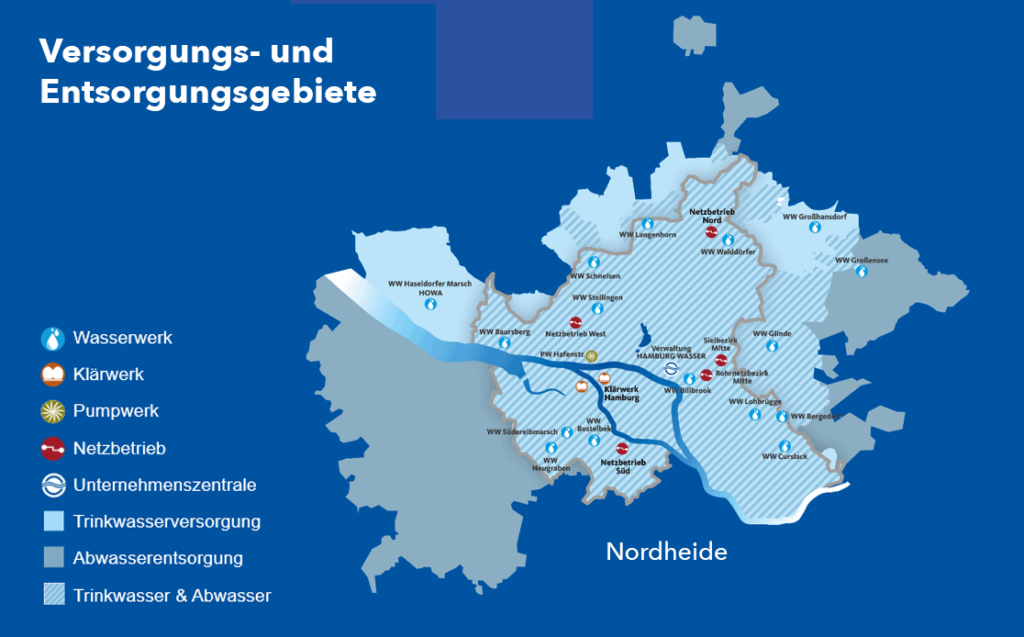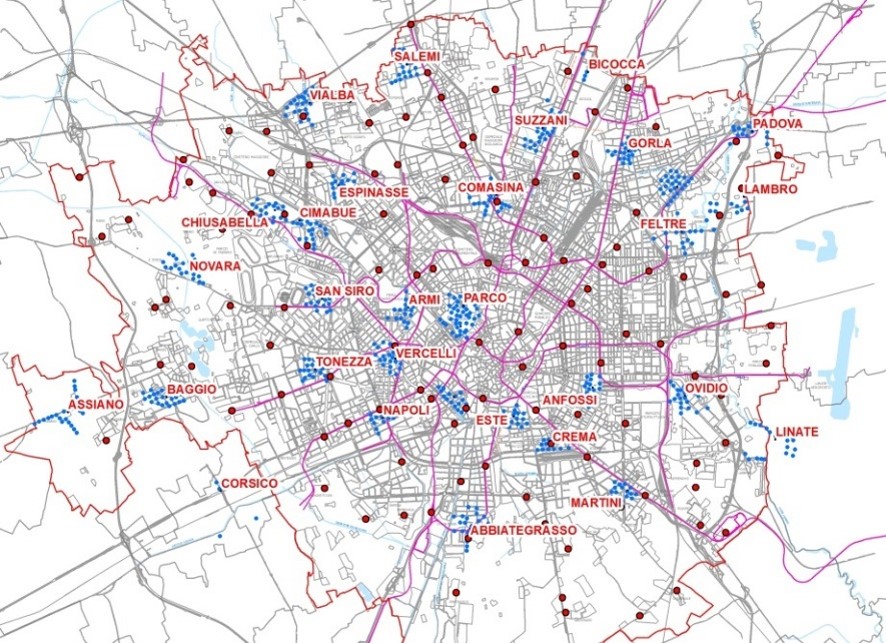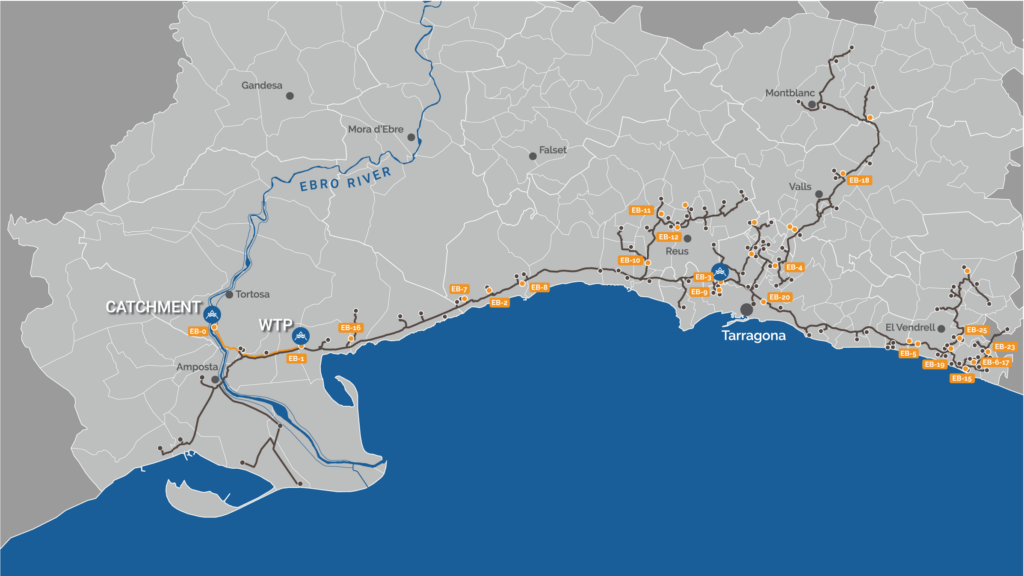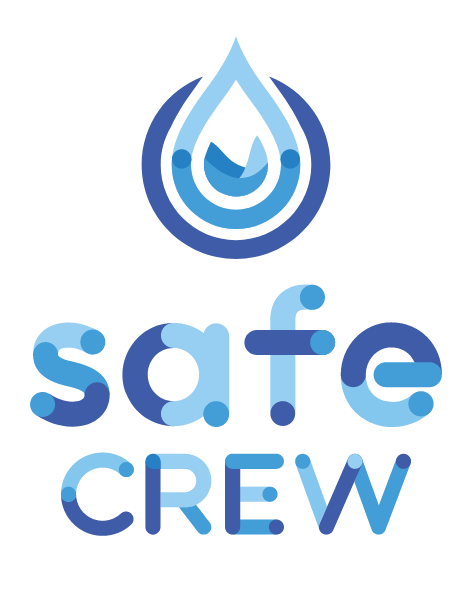SafeCREW is working on Four case studies
Drinking water supply systems in Europe vary with respect to water sources, water quality, and geographical and climate conditions and thus apply different drinking water treatments. The need for disinfection to provide water safe for human health is already common practice in some drinking water supply systems (DWSS) and may become necessary more often as a consequence of climate change. SafeCREW will focus on disinfection and the formation of disinfection by-products.
SafeCREW will work on three case study sites which are located in northern, southern and eastern Europe. These are representative of non-disinfected and disinfected DWSS with various source water conditions in the different EU regions.
The German case study (CS#1) includes two major cities (Berlin, Hamburg) that use Managed Aquifer Recharge (MAR) and ambient groundwater as a drinking water source and currently operate without disinfection treatment on a regular basis.
The site in Milan (Italy, CS#2) treats local groundwater, which is disinfected only before entering the drinking water distribution network.
In the case study in Tarragona (Spain, CS#3) drinking water is disinfected in the drinking water treatment plant (DWTP) as well as in the drinking water distribution network.
In the case study in Rivne (Ukraine, CS#4) drinking water is disinfected in the drinking water treatment plant.
For the northern case study, SafeCREW will work on characterising the microbial quality of the source water and the subsequent subsurface passage. It aims at minimising the potential ramifications of introducing disinfectants into the existing non-disinfected drinking water distribution network.
For the two southern drinking water supply systems with disinfection, the aim of SafeCREW is to minimise disinfectant dosages and disinfection by-product concentrations on the basis of novel long-term monitoring approaches and pre-treatment of DBP precursors.
For the eastern case study, SafeCrew aims to increase the level of water safety in drinking water supply systems.
CS#1: Northern Germany
Near-natural non-disinfected drinking water supply


Case study #1 can be characterised as “near-natural non-disinfected drinking water supply“. The two water utilities in Berlin and Hamburg, both in northern Germany, supply a population of more than 3.7 and 1.9 million respectively. In both cities, the technical drinking water treatment consists of aeration and rapid sand filtration without chemical disinfection on a regular basis. In Berlin, the subsurface passage during induced Bank Filtration (BF) before abstraction is the main barrier to ensure microbially safe drinking water. In Hamburg, water from deep groundwater wells is used for drinking water production. This water is well protected but a few swallow wells exist that deliver bank filtrate to drinking water production.
Status at project start: lack of innovative microbial monitoring
Berlin and Hamburg have non-disinfected treatment pathways and drinking water distribution networks (DWDN) with natural and deliberately recharged groundwater as source water. Existing early-warning systems do not include innovative microbial monitoring. Despite potential microbial growth in DWDN, utilities cannot quickly shift to chemical disinfection, because of a looming threat of significant DBP formation due to increased NOM concentrations.
Ambition for the end of the project: future-oriented risk management approach
(I) A future-oriented risk management approach that includes large volume sampling via ultrafiltration modules to enrich and recover relevant microorganisms, enabling their detection at very low concentrations during subsurface passage.
(II) Quantitative microbial risk assessment (QMRA) to investigate to what source water quality and hydraulic retention times human health targets can still be met.
(III) Strategies (incl. treatment combinations to remove DBP precursors) to provide safe drinking water with minimal DBPs in the case of first-time disinfection, considering potential reactions between residuals in the currently non-disinfected DWDN.
CS#2: Milan, Italy

Chlorinated drinking water supply system
In Milan, 400 active wells produce 220 million m3 of drinking water annually. Water abstracted from the aquifer is treated in 28 DWTPs, generally undergoing activated carbon filtration and, where needed, disinfection via NaOCl and UV irradiation. The DWDN is about 2,228 km long, serving 1.4 million inhabitants.
Status at project start: Lack of knowledge about interaction of disinfectants with material
Up to now, considering the good microbiological quality of supplied groundwater, the disinfection process is not optimised. In addition, in a highly urbanised area it is critical to set up working sites for pipe renovation, preferring relining methods, but the knowledge about the interaction between epoxy resins components and water is scarce, especially in the case of presence of residual disinfectant. Current research is evaluating how to exploit monitoring devices for studying bacterial dynamics and communities in treated water. In addition, the potential migration of bisphenol A (BPA) from epoxy resins is under investigation.
Ambition for the end of the project: Guidelines for selection of relining material
(I) Optimisation of disinfection operating parameters based on online analysis of bacterial load and soft sensors to ensure water microbiological stability in the DWDN.
(II) Identification of the potential formation of DBPs due to higher residual chlorine and its interactions with relining resins.
(III) Guidelines for selection and commissioning of relining resins to minimise migration into treated water.
CS#3: Tarragona, Spain

Chlorinated drinking water supply system
The full-scale DWTP with a 400 km distribution network serves 800,000 inhabitants in winter and 1.5 million in summer. Source water from the Ebro River undergoes pre-ozonation, flocculation, sand filtration, main-stage ozonation, activated carbon filtration, ultraviolet disinfection, and final disinfection with sodium hypochlorite with several chlorination boosters along the network to keep the required level of residual free chlorine.
Status at project start: Manual parameter adjustment/ Understanding network dynamics
Current DWTP operation involves manual parameter adjustment based on discrete sampling and water quality analysers, which cannot guarantee compliance with the EU DWD at all points of supply. DWTP set-points are based on online water quality values such as turbidity or absorbance, and water quality values from discrete sampling such as TOC values, without knowledge of site-specific NOM composition, current DBP formation kinetics and final effect on DBP formation.
DWDN chlorination booster set-points are based on local residual free chlorine targets without knowledge of the DBP formation network dynamics. No actions to increase climate change resiliency are being taken in the DWTP or DWDN systems, since no studies on the specific threats are available.
Ambition for the end of the project: Combined performance indicator for chemical, toxicity and microbial risks
(I) In-depth evaluation on how changes in DWTP processes result in reduced DBP formation potential not only by lowering the NOM quantity but also by changing NOM chemical properties.
(II) Development of an early alert system predicting the final generation of DBPs from the expected influent water to the DWTP, and recommend process changes to prevent formation.
(III) Risk-based management of the DWTP and DWDN which combines chemical, toxicity and microbial risk in one performance indicator set.
CS#4: Rivne, Ukraine

Chlorinated drinking water supply system
About 98% of cities, 91% of urban-type settlements and 23% of villages are covered by centralised water supply system services in Ukraine. The total length of water supply networks is 92,000 km, including 35% of dilapidated and emergency networks. Operating systems of centralised water supply in settlements of western Ukraine mainly use ground water.
Current status: No experience in applying modern methods of predicting the dissemination of pollution in drinking water supply systems
In western Ukraine, drinking water is disinfected using chlorine and its compounds (sodium hypochlorite) and bactericidal lamps. The water for consumers in small settlements is often supplied without its disinfection. The lack of the necessary measuring equipment at water supply plants creates additional risks in the supply of low-quality water. The current research with the involvement of modern measuring equipment will allow practical experience to be gained, and obtain detailed information about the change in the quality of chemical and bacteriological contamination in drinking water supply systems. The assessment of potential risks to human health and measures developed to reduce them will be conducted on the basis of these studies using the experience and information resources of the project partners.
Ambition for the end of the project: increasing the level of water safety in drinking water supply systems
(I) Implementing risk-based management through the creation of water
safety plans.
(II) Adapting hydraulic models and establishing soft sensors for conditions
with limited data availability.
(III) Identifying regulatory and real-life gaps in Ukrainian and European
drinking water quality guideline values.

